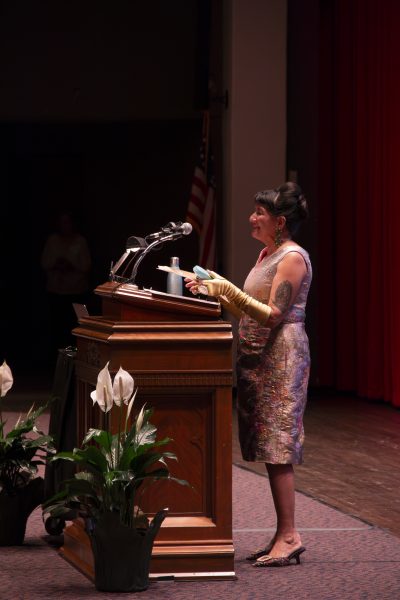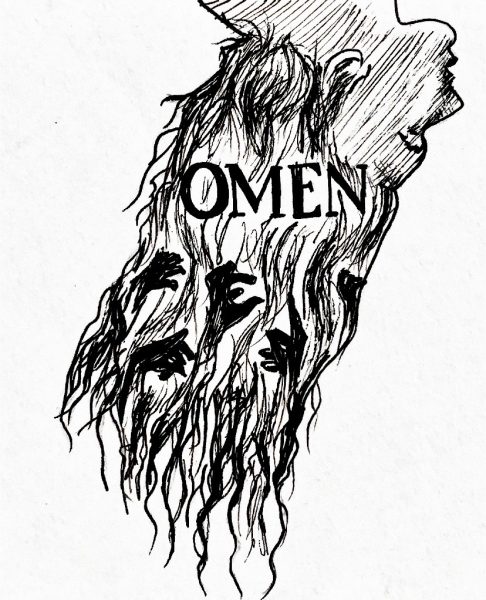Black History Month Spotlight: Naya Rivera
Trinity students share how the late star’s character on Glee impacted them
Santana Lopez, Naya Rivera’s most memorable television character, served as a vessel for the Afro-Latinx queer experience for countless young girls. The late actress, who was tragically recovered on July 13th, 2020 after drowning — the same day her former Glee costar Cory Monteith passed away seven years prior in 2013 — helped normalize queer characters in television through her role on the comedy-drama Glee.
The star would have been celebrating her 34th birthday on January 12th. In order to commemorate the life and impact of Rivera, Trinity students shared the ways Santana Lopez’s character on Glee was important to them. It’s crucial to note that in discussions about Rivera, she is often referred to as Latina-only. Rivera is Afro-Latina, and this week’s Black History Month spotlight is dedicated to her and all that she was and continues to be.
Natalia Salas, senior, says that Santana has always been one of her all-time favorite television characters.
“I discovered Santana Lopez when I was in seventh grade, and she has been one of my favorite TV characters ever since. What I personally loved and admired most about Santana was her confidence.”
Salas says that she would excitedly wait for new episodes of Glee each week.
“Growing up, I was so excited for the new episodes of Glee each week, to watch Santana be an absolute icon at everything she did, from singing to dancing to destroying her competition,” Salas said.
To junior Hannah Spencer, Santana’s lesbian identity was important in her coming to terms with her own sexuality.
“I was in middle school when I first started watching Glee and was exposed to the character of Santana. I have been aware of my sexuality from a very young age, but it always felt like a topic I was not allowed to talk about with myself, let alone another person. I felt ashamed of the thoughts and feelings I was having in regards to my sexuality, so I always pushed them to the back of my mind,” said Spencer.
In the popular television show, Santana’s character dated, and eventually married, fellow cheerleader Brittany S. Pierce, played by Heather Morris.
“I remember seeing the relationship between Santana and Brittany on Glee and feeling this sense of relief rush over me. Their relationship was the first time I was exposed to something like that in the media, and in a way, Santana normalized my thoughts and feelings. The way Glee showed Santana coming to terms with her sexuality and accepting her identity helped me to be more comfortable with who I am.”
Like many other people who grew up with minimal queer representation, Spencer says she appreciates not only the character of Santana, but Naya Rivera as well.
“When I think about impactful moments and people that helped in my journey to figuring out who I am, Santana Lopez is always one of the first to come to mind. She is someone I still take comfort in and for that I am grateful for the character of Santana and for Naya Rivera.”
Similar to Spencer, junior Victoria Henretty says she also finds comfort in Santana’s character.
“So I’ve been reflecting on Santana and what she really meant to me, especially as someone who was very into Glee starting in 6th grade. She was one of the first lesbian characters I saw on TV and I truly resonated with. Family members would make homophobic comments about her when they would see me watching Glee and I didn’t understand why that hurt me so bad,” Henretty said.
Henretty adds that queer representation was extremely important for a young person like herself to see.
“Her reckoning with the comphet in the first few seasons reflects so many people’s experiences. For years Glee was my comfort show, and Santana has a lot to do with that. She constantly tried to fully be herself, which is something I try to do everyday. Characters like those are important for young people to see,” said Henretty.
Though Santana’s character was important to lesbian representation, she also helped other LGBTQ+ people become comfortable with their sexuality, like junior Joshua Anaya.
“Santana was a huge figure in my life that I wasn’t sure I’d ever needed. I grew up hearing homophobic family members (specifically & similarly to Santana, my Latinx grandparents) spew hurtful and isolating language about queer people that affected me even before coming out. To see someone on such a popular show actively stand up and to one of these all-too-familiar family members was visceral to me even in 2021, twelve years after Glee originally came out,” Anaya said.
He elaborates that though queer representation in media is merely the beginning of the path to queer liberation, Santana’s character is still valuable to him.
“While queer representation is not queer liberation, it meant so much to watch Santana experience such a genuine and delicate love that I did not always see as possible for myself,” Anaya said.
Ethan Jones, senior, says he’s such a fan of Santana’s recorded music that he listens to one of her covers every day.
“Santana Lopez is an unforgettable cultural icon. I looked to her character for inspiration, comfort and courage when coming out to my family, so she means a lot to me. I literally listen to her cover of “Rumour Has It/Someone Like You” every day. She’s my Twitter header,” Jones said.
Jolie Francis, also senior, says she was first introduced to Glee and Santana’s character her sophomore year of high school.
“As much as I love white icons singing Broadway songs, because I really do love it, Naya Rivera brought something different to Glee. Santana Lopez was so brutally honest and funny that to this day, I still strive to model myself after her. I want to live and love as confidently and as carefree as both Naya and her character did, and while I do worship Glee with my entire body and soul, it’s important to mention that Santana was the only character who looked even remotely similar to me,” Francis said.
Giselle Britt, senior, believes that Santana was more complex than people gave her credit for.
“Santana represents what it really means to be a powerful and strong woman; although some people find her stoic and ruthless, her progression through the show to understand herself and her own identity highlights a type of emotional vulnerability that’s often used to tear down influential women. Santana demonstrates that you can be both strong and emotional, two things that many think are mutually exclusive.”
















